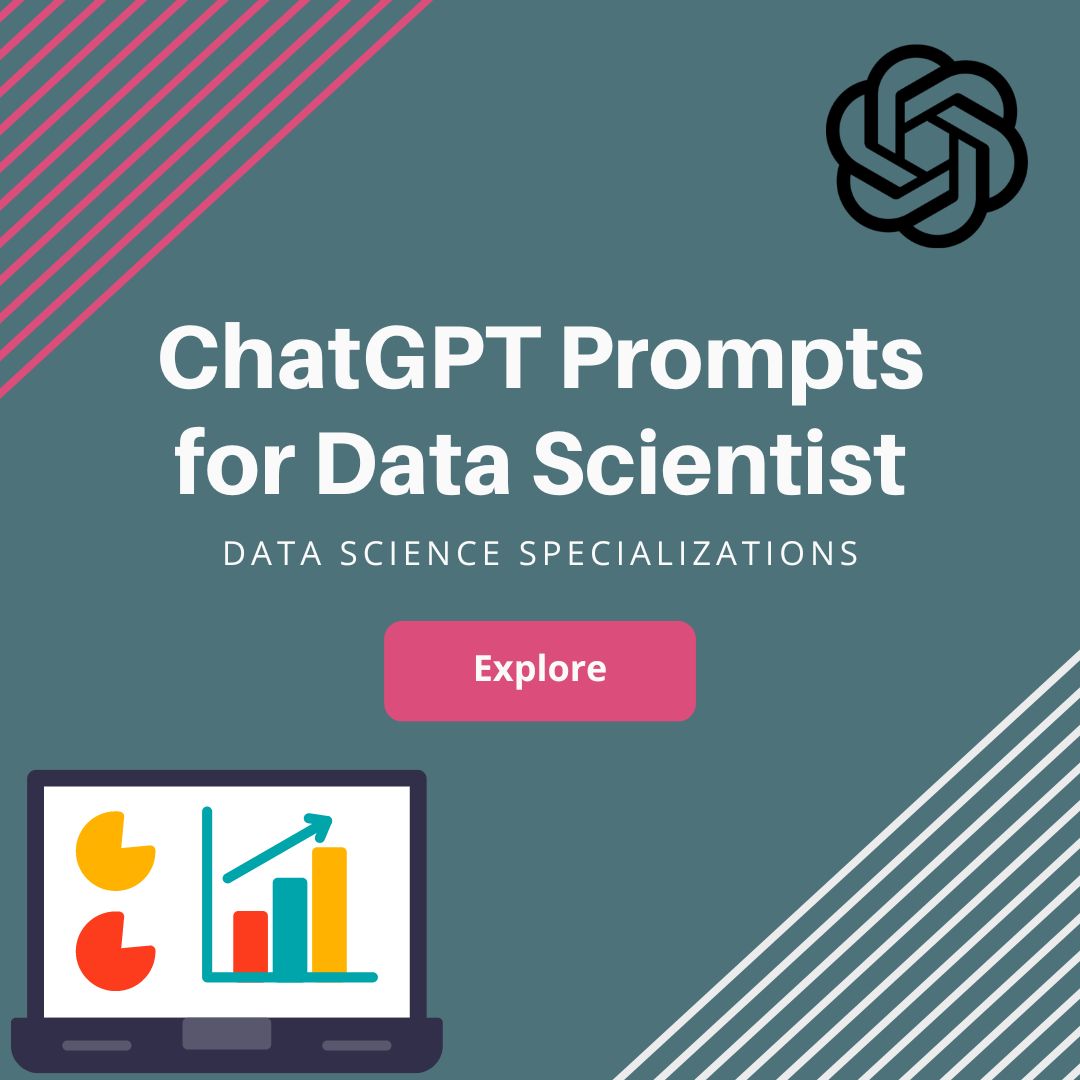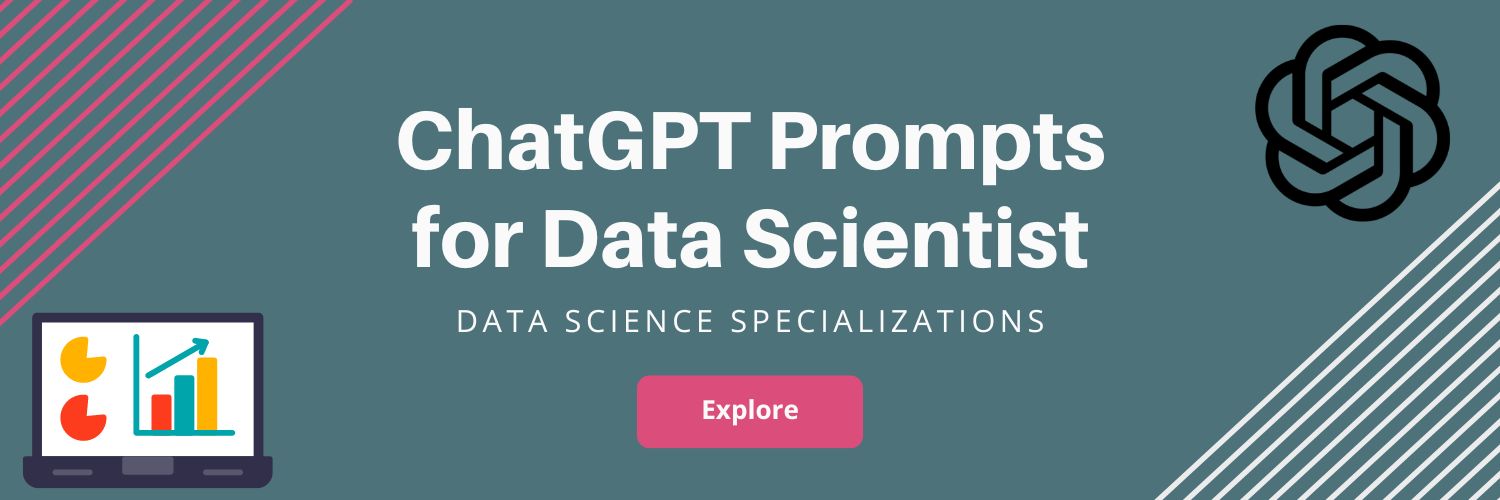ChatGPT Prompts for Data Scientists
 ismail saleem
ismail saleem
In the ever-evolving landscape of data science, staying ahead requires constant innovation and exploration of new tools and techniques. One such tool that has gained significant attention in recent times is ChatGPT, a powerful language model developed by OpenAI. While ChatGPT is often used for natural language understanding and generation, it can also be a valuable asset for data scientists. In this article, we will delve into the world of ChatGPT prompts and explore how they can be effectively leveraged in various aspects of data science.
Understanding ChatGPT Prompts
ChatGPT, based on the GPT-3.5 architecture, is a state-of-the-art language model capable of understanding and generating human-like text. The way it works is by taking a series of messages as input and generating a response based on the context provided. These messages are typically formatted as a conversation, with each message containing both user and assistant inputs.
For data scientists, the ability to interact with ChatGPT using prompts opens up new avenues for experimentation and problem-solving. By framing queries and instructions effectively, data scientists can harness the power of ChatGPT to perform tasks ranging from data exploration to model development.
Applications in Data Science
Data Exploration and Analysis:
- Data scientists can use ChatGPT to obtain insights into their datasets by asking questions about the data. For example, one might prompt ChatGPT with questions like, "Describe the distribution of values in column X" or "What are the key trends in the dataset?". This can be particularly helpful in the initial stages of a project when getting a quick overview of the data is crucial.
Data Preprocessing:
- Handling missing values, encoding categorical variables, and scaling features are common tasks in data preprocessing. Data scientists can use ChatGPT prompts to generate code snippets for these tasks, streamlining the preprocessing phase and saving time on routine operations.
Model Development:
- ChatGPT can assist in the process of building and fine-tuning machine learning models. Data scientists can ask for suggestions on model architectures, hyperparameter tuning, and even receive explanations for complex concepts. For example, a prompt like "Propose a neural network architecture for a binary classification problem" can yield valuable insights.
Troubleshooting and Debugging:
- When faced with errors or unexpected behavior in code, data scientists can turn to ChatGPT for assistance in identifying and resolving issues. By describing the problem and asking for potential solutions, ChatGPT can provide debugging suggestions or offer alternative approaches to problem-solving.
Documentation and Report Writing:
- Generating documentation and reports is an integral part of the data science process. Data scientists can use ChatGPT to draft sections of reports, generate explanations for model predictions, or even create documentation for code snippets.
Best Practices for Using ChatGPT Prompts in Data Science
Clearly Define the Context:
- Start your prompts with a clear context to help ChatGPT understand the problem or task at hand. Clearly state the information you want or the action you're looking for.
Iterative Prompting:
- If the initial response from ChatGPT is not precise or detailed enough, consider providing additional context in subsequent messages to refine the model's understanding.
Experiment with Phrasing:
- Try rephrasing your prompts to see how the model responds. Experimenting with different question structures can lead to more insightful and accurate answers.
Use Temperature and Max Tokens:
- Adjust the temperature and max tokens parameters to control the randomness and length of the responses. This can help you fine-tune the level of detail in the model's output.
Verify Results:
- Always validate the information provided by ChatGPT, especially in critical tasks. Cross-check the responses with your domain knowledge and explore multiple perspectives before making decisions based on the model's output.
Conclusion
ChatGPT prompts offer a unique and powerful way for data scientists to interact with language models and enhance their workflows. By integrating ChatGPT into various stages of the data science process, from exploration to model development and documentation, data scientists can benefit from the model's natural language capabilities. However, it's essential to approach the use of ChatGPT with a critical mindset, verifying results and iteratively refining prompts to achieve the desired outcomes. As the field of data science continues to evolve, incorporating innovative tools like ChatGPT can contribute to more efficient and effective data-driven decision-making processes.
Subscribe to my newsletter
Read articles from ismail saleem directly inside your inbox. Subscribe to the newsletter, and don't miss out.
Written by

ismail saleem
ismail saleem
We're passionate about harnessing the power of ChatGPT to make it a valuable tool for professionals. By tailoring prompts to specific occupations, we aim to demonstrate the profound impact ChatGPT can have on tasks, efficiency, and knowledge expansion across a wide spectrum of careers. Our journey is about innovation and adaptation, where ChatGPT becomes an indispensable companion for professionals worldwide.
